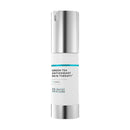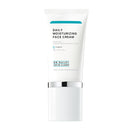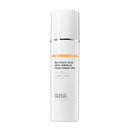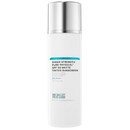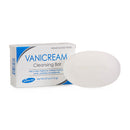Diabetic Neuropathy: How Diabetes Can Affect Your Skin

Diabetic neuropathy and skin problems are related. Diabetes can affect your skin in a number of ways. Your skin is often the "tip of the iceberg" for your internal health. Your skin is your body's largest organ, it protects you from the outer world and healthy skin is important for your well-being. A health challenge such as diabetes will often show through on your skin. Also, having diabetes puts your skin at risk for some unique problems.
Part of good diabetes medical care is learning from your doctors and nurses how to take special care of your skin to help you avoid diabetic skin problems. Your diabetes management involves careful monitoring of your diet and the timing of your medications. Because it's important to avoid skin problems when you have diabetes, your diabetes management educator also teaches you to take special care of your skin.
Did you know that one of the main indicators that your diabetes may be getting worse is a breakdown of the skin on your lower limbs, especially your feet?
The first sign of diabetic neuropathy is when your skin becomes compromised at your feet. To understand why that is, you must first understand diabetic neuropathy.
What Is Diabetic Neuropathy?
Diabetic neuropathy is essentially nerve damage resulting from high sugar (glucose) levels in your blood. This can occur either at your limbs, called peripheral neuropathy, or elsewhere in the body such as your organs, called autonomic neuropathy.
What are the signs of peripheral neuropathy?
When your peripheral nerves become damaged, you start to lose sensation or you may feel tingles or pain. In the worst case scenario, this can be devastating and the nerve damage may cause your cells to die in a particular area leading to tissue death (necrosis) and the need for surgical removal. Unfortunately, there are usually no signs at the start of diabetic neuropathy.
The earliest signs of diabetic peripheral neuropathy and skin problems appear in your limbs, since it is easier to "feel" a loss of sensation or to feel weakness in your muscles compared to other parts of your body.
It's one reason to pay special attention to your limbs when you have diabetes and to work hard to control your blood sugar levels.
What are some of the signs of autonomic neuropathy?
Other signs of damage related to nerve damage (autonomic neuropathy) include difficult or frequent urination, diarrhea or constipation, or vision disturbances indicating start of blindness. Sometimes the general muscle weakness and fatigue experienced from diabetes may make you feel dizzy when you stand up and make you feel like you are about to pass out.
Other than causing numbness, why else is diabetic neuropathy and the resultant skin problems so serious?
If your sense of touch diminishes, then you are unable to feel bruises and cuts that may go untreated and become infected. The indirect consequences of diabetic neuropathy on the skin range from small to devastating results: blisters, sores, ulcers, gangrene, and possibly amputation. Without going too much into the more unsettling details, many of these less desirable outcomes can be avoided with good hygiene, regular foot exams, and your careful foot and skin care.Details of Diabetic Foot Exam
 A foot exam should be performed by a doctor once a year or more depending on the severity of your symptoms and your diabetes. By the same token, foot exams should be regularly performed by you at home so that you become really familiar with your feet such that you know your "baseline status" and can quickly identify any changes in this status. Typical things to look for:
A foot exam should be performed by a doctor once a year or more depending on the severity of your symptoms and your diabetes. By the same token, foot exams should be regularly performed by you at home so that you become really familiar with your feet such that you know your "baseline status" and can quickly identify any changes in this status. Typical things to look for:
- Pain, numbness, or weakness in ankle or feet
- Foot sores, blisters, or ulcers
- Any areas of warmth
- Difficulty rotating your foot in a circle
- Thick callouses
A sore is a superficial foot lesion that may develop into an ulcer overtime. An ulcer on the other hand is a much deeper lesion and can deeply tunnel into the body, encompassing small to large body surface areas. Foot exams are key to identify the early stages of ulcers and to prevent them from getting worse. If you discover any of the above signs or symptoms, contact your local physician to perform a more thorough assessment of your feet immediately!
Diabetic Foot Care Tips for Healthy Skin
Another way to prevent or to slow diabetic foot neuropathy is through proper foot care. Essentially you want to increase circulation, since diabetic neuropathy is partially due to a lack of blood flow to the extremities. Circulation increases oxygenation for the muscles, opportunities for immune cells to encounter and attack germs, and healing properties. It is also important to treat any foot sores or blisters. Below are the main points of diabetic foot care, similar to many of Dr. Bailey's foot general care tips.- Wear clean and soft socks every day that are of appropriate size: Be sure they are not too small or too big.
- Wear the correct size shoes: Your physician can help determine the right size shoe for you. There are also many diabetic shoe programs available.
- Check for and remove any debris and pebbles from your shoes.
- Maintain basic foot hygiene: Wash your feet with lukewarm water and hypoallergenic soap.
- Dry feet completely after washing: even between toes, any areas of dampness may lead to skin breakdown or sores.
-
 Apply lotion all over feet: except between toes. Choose a deeply hydrating lotion that is hypoallergenic. Dr. Bailey's favorite is her All Natural Face, Hand and Body Lotion, especially on thicker skin areas of the body such as the feet.
Apply lotion all over feet: except between toes. Choose a deeply hydrating lotion that is hypoallergenic. Dr. Bailey's favorite is her All Natural Face, Hand and Body Lotion, especially on thicker skin areas of the body such as the feet. - Look for blisters, cuts, and sores using a mirror: Call your local physician if you find one so he can treat and determine if it is at risk for becoming an ulcer.
- File your toenails and make them smooth and even: Prevent cuts or ingrown toenails that will lead to infection.
- After a shower or bath, use a pumice stone on thick calluses to prevent cracking.
- Never walk anywhere barefoot: inside or outside, you increase the chances for cuts or bruises that may go unnoticed.
Foot care is an essential part of diabetic care management. Although these foot care tips are useful for anyone, diabetes make your feet more susceptible to adverse consequences if any skin breakdown occurs. Dermatologists see a lot of foot sores and ulcers that could have been prevented with regular foot care and exams. Essentially, you know your body best!
Photo - Thanks and Gratitude to: CDC/Amanda Mills



